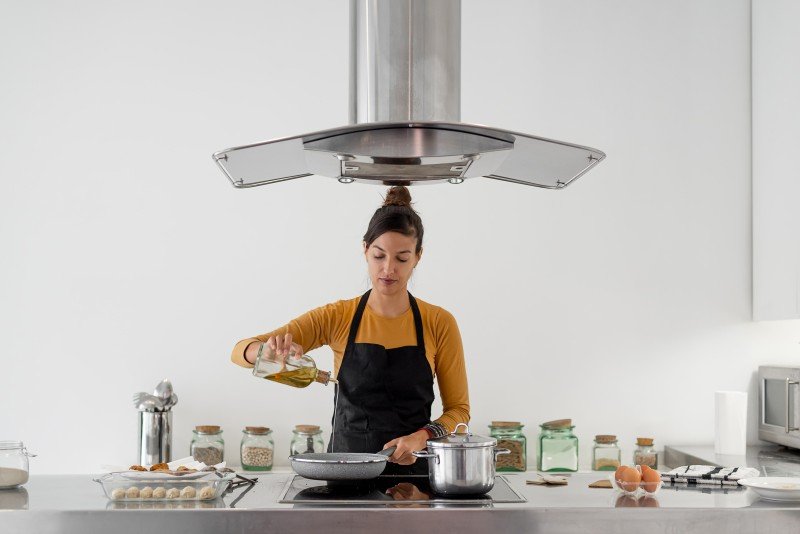10 Ovens And Hobs Tricks Experts Recommend

Understanding Ovens and Hobs: A Comprehensive Guide
Cooking has come a long method given that the days of open flames and simple cooking approaches. Today, ovens and hobs are at the heart of contemporary kitchen areas, supplying adaptability, performance, and a selection of cooking choices. Whether you are a novice cook or a seasoned chef, understanding the differences, features, and functions of these devices is essential for making the most of culinary capacity. This post breaks down the numerous types of ovens and hobs readily available on the marketplace, their functionalities, and how to choose the right home appliances for your kitchen.
What is an Oven?
An oven is an enclosed space created for heating and cooking food, using various methods such as baking, roasting, and broiling. ovensandhobs.uk come in numerous types, each serving special cooking preferences and requirements.
Kinds of Ovens
Standard Ovens:
- Use gas or electrical power for heating.
- Generally include a heating aspect at the top and bottom.
- Suitable for basic baking tasks.
Convection Ovens:
- Use a fan to circulate hot air, promoting even cooking.
- Ideal for baking, roasting, and reheating.
- Lowers cooking time and boosts flavor.
Steam Ovens:
- Utilize steam to cook food while retaining moisture and nutrients.
- Outstanding for health-conscious cooking, such as vegetables and fish.
Microwave Ovens:
- Use electromagnetic radiation to heat food rapidly.
- Best for reheating leftovers or cooking easy meals.
Wall Ovens:
- Built into the wall, saving space in the kitchen.
- Available in numerous configurations, consisting of single or double ovens.
Key Features of Ovens
- Temperature level Control: Precision heating for different baking and cooking processes.
- Self-Cleaning Options: Some designs have self-cleaning modes that use heats to burn off food residue.
- Smart Features: Wi-Fi connectivity enables remote pre-heating, tracking, and recipe management by means of smart devices.
What is a Hob?
A hob is a cooking surface, frequently referred to as a range or cooktop, where cookware is put for heating. Hobs are available in various materials, sizes, and heating approaches, accommodating diverse cooking requirements.
Types of Hobs
Gas Hobs:
- Utilize gas burners for direct flame cooking.
- Offer accurate temperature level control and are favored by lots of professional chefs.
Electric Hobs:
- Use electric coils or smooth tops.
- Some models are equipped with induction technology, supplying quick heating through electromagnetic energy.
Induction Hobs:
- Cookware must be made of magnetic products.
- Extremely energy-efficient, offering quick heat and lowering burn dangers.
Ceramic Hobs:
- Feature a glass-ceramic surface area with heating elements beneath.
- Easy to tidy however can be less energy-efficient than induction hobs.
Secret Features of Hobs
- Burner Configuration: Varies from two to six burners, depending on model and size.
- Power Levels: Multiple settings enable greater precision in cooking.
- Safety Features: Options like flame failure gadgets and kid lock settings make sure safety during cooking.
Picking the Right Oven and Hob
Choosing the best oven and hob for your kitchen involves careful consideration of different aspects. Below is a list of questions to assist your choice process:
- What is your primary cooking design?
- Just how much kitchen area do you have?
- What is your spending plan?
- Do you choose gas or electric home appliances?
- Are extra features like clever connection crucial to you?
Table Summary of Key Differences Between Ovens and Hobs
| Feature | Oven | Hob |
|---|---|---|
| Functions | Baking, roasting, broiling | Boiling, frying, sautéing |
| Cooking Method | Enclosed heat | Direct cooking surface |
| Temperature Control | Adjustable settings | Stove settings |
| Types | Electric, gas, convection, microwave | Gas, electric, induction, ceramic |
| Cooking Capacity | Larger (can prepare numerous dishes) | Smaller (concentrate on instant cooking) |
| Cleaning | Self-cleaning alternatives available | Usually manual cleansing needed |
Upkeep Tips for Ovens and Hobs
Appropriate care and upkeep of your cooking home appliances extend their lifespan and effectiveness. Here are important maintenance pointers:
Regular Cleaning:
- Clean the oven interior after each usage to avoid residue accumulation.
- Clean down hob surface areas after cooking to avoid spots.
Inspect Seals:
- Ensure the oven door seals are undamaged to preserve energy efficiency.
- Replace worn-out gaskets and seals as needed.
Check Burners and Elements:
- For gas hobs, look for clogs in burners.
- For electric hobs, check coils and surface areas for signs of wear.
FAQs
Can I use any cookware on induction hobs?
- No, induction hobs only work with magnetic pots and pans, such as cast iron or stainless steel.
What is the most energy-efficient cooking appliance?
- Induction hobs are normally the most energy-efficient choice, using less energy than standard gas or electric designs.
How often should I clean my oven?
- It's recommended to clean your oven every few months, or more regularly if you use it frequently.
Can I install an oven and hob independently?
- Yes, both home appliances can be installed separately based on kitchen style and space.
What should I think about when setting up a gas hob?
- Guarantee appropriate ventilation and adhere to local security codes. It is a good idea to have a professional install gas appliances.
Comprehending the functions, types, and maintenance of ovens and hobs can considerably enhance your cooking experiences. Selecting the best home appliances customized to your cooking style, kitchen space, and safety needs can make all the difference in accomplishing cooking success. By being informed about your alternatives, you can enjoy a more effective and enjoyable cooking journey, bringing scrumptious meals to your table with ease.

